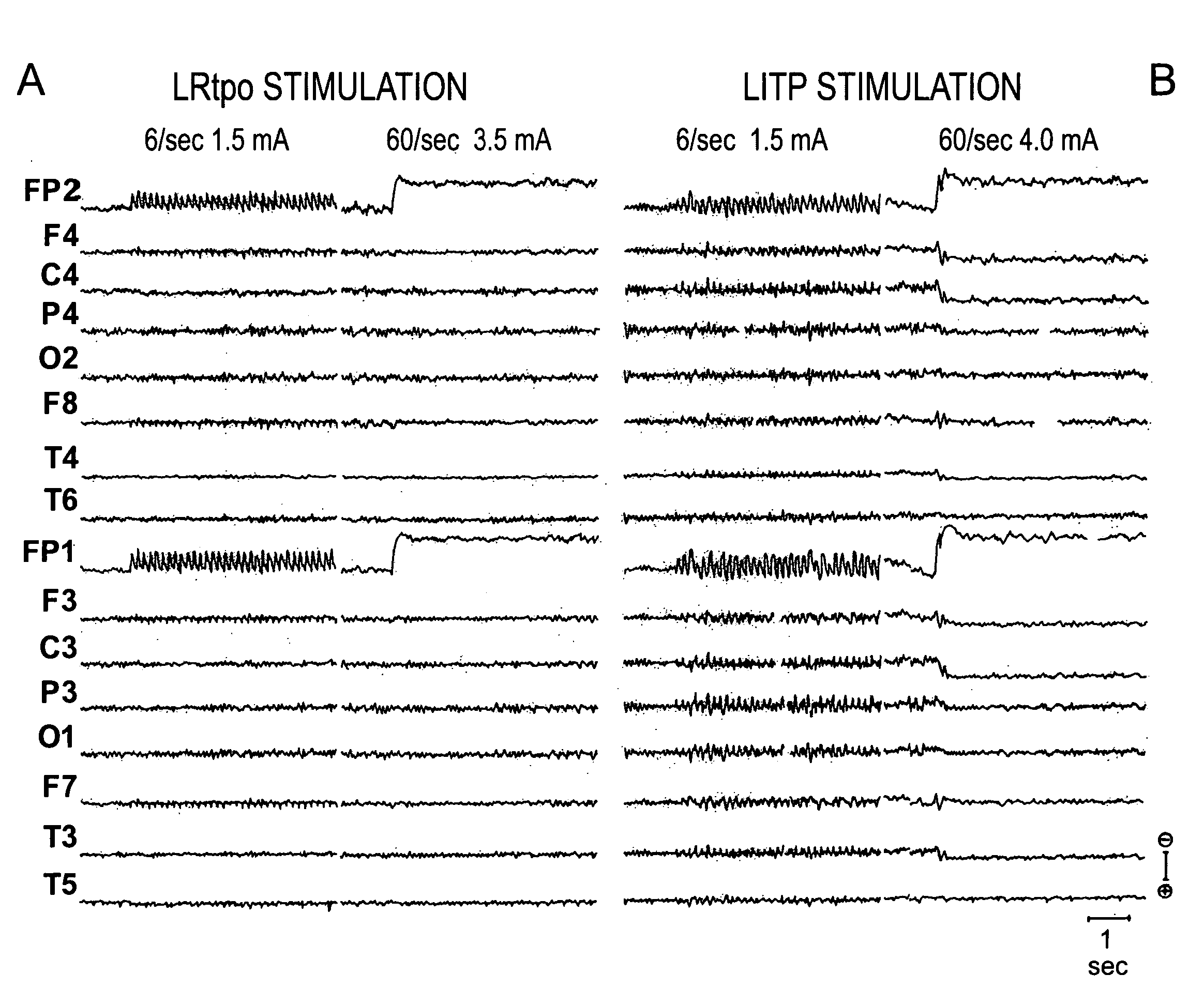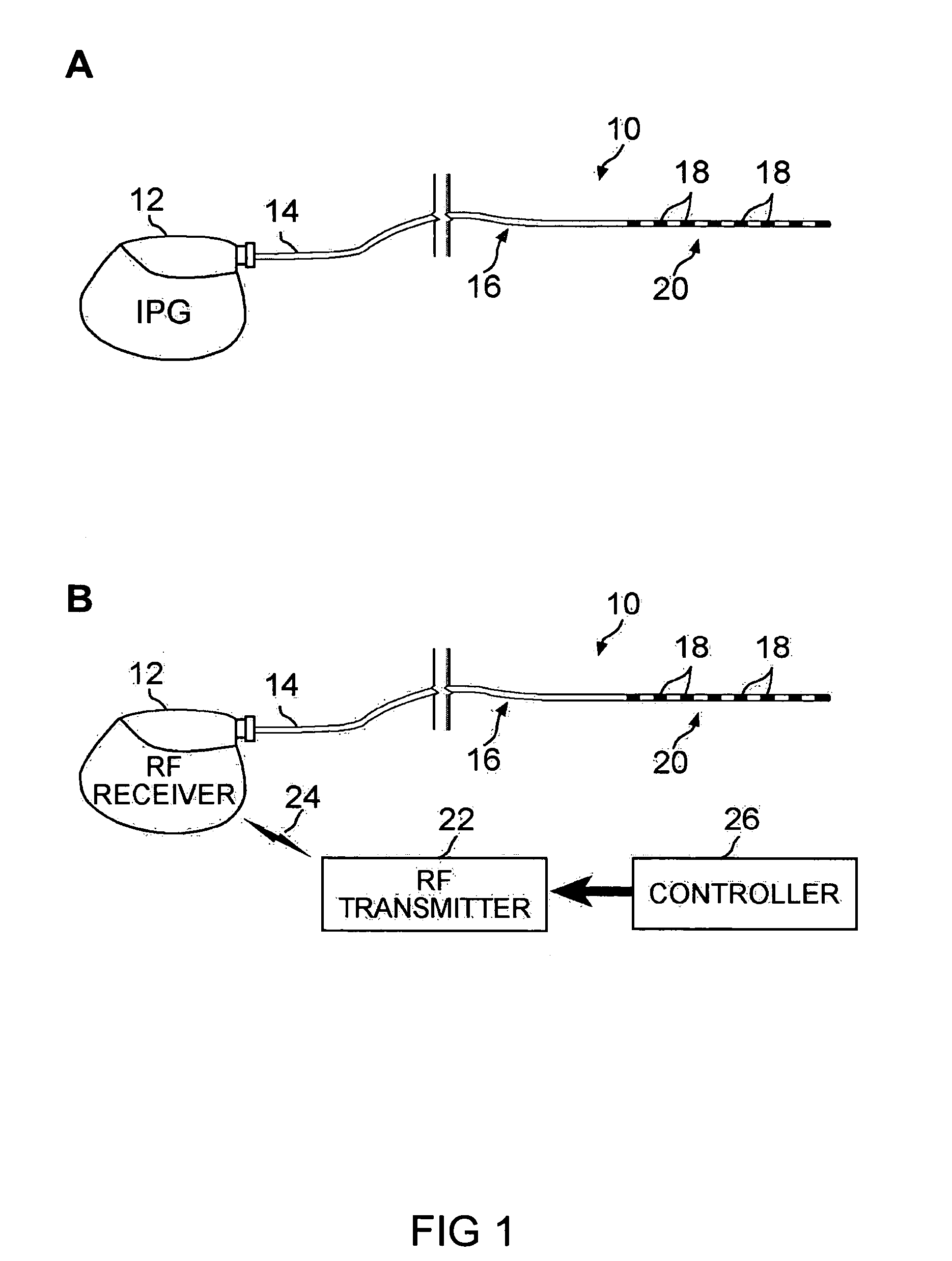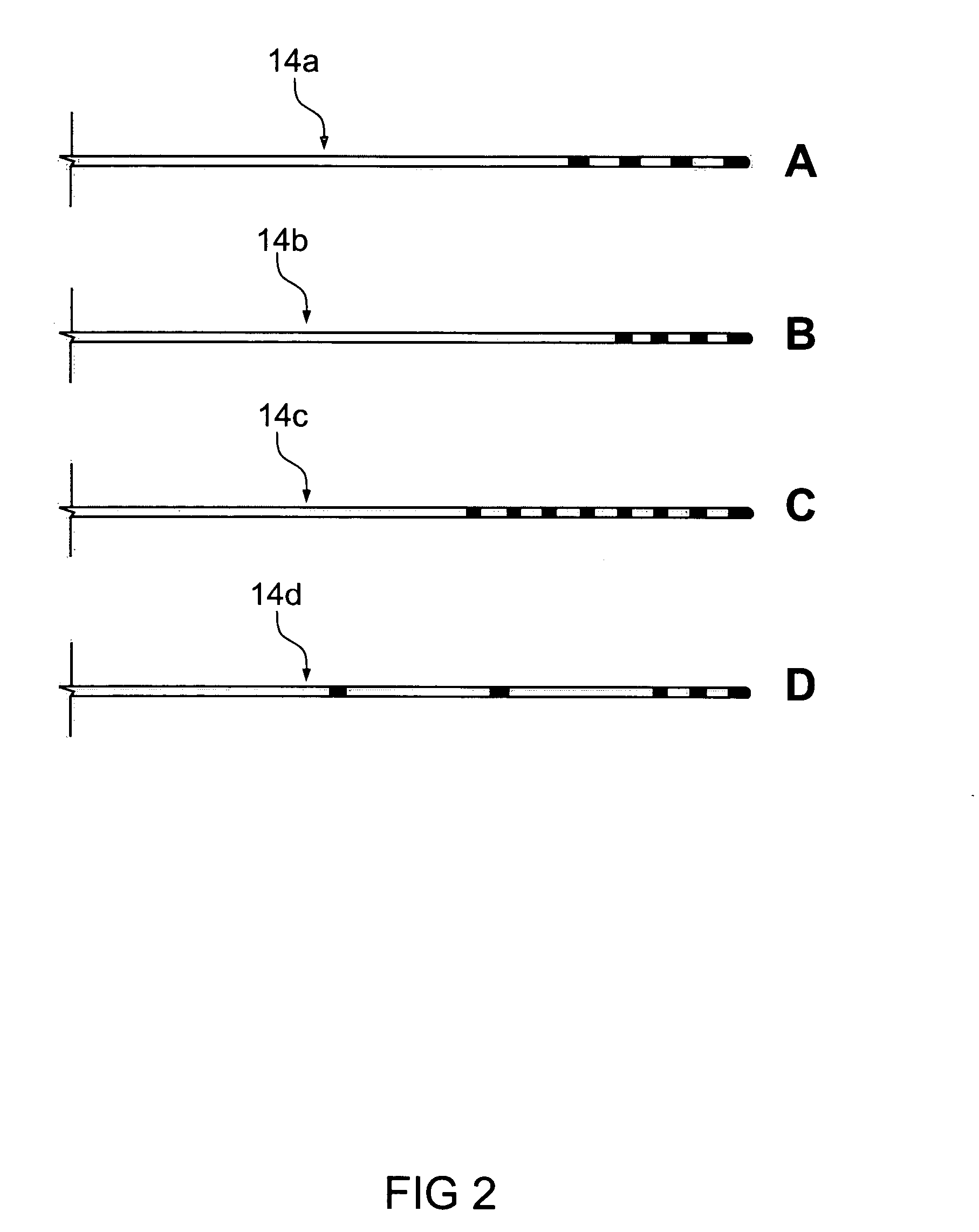Method of treating mood disorders and/or anxiety disorders by brain stimulation
a brain stimulation and mood disorder technology, applied in the field of neuronal tissue stimulation, can solve the problems of chronically disabled, treatment-resistant depression has almost no alternative, mood and/or anxiety disorders that remain treatment refractory, etc., to achieve the effect of alleviating or modulating the mood and/or anxiety disorder, and reducing the risk of depression
- Summary
- Abstract
- Description
- Claims
- Application Information
AI Technical Summary
Benefits of technology
Problems solved by technology
Method used
Image
Examples
example 1
Patient Selection for Treatment of Depression
[0098]A 49 years old female with history of recurrent depression for 23 years and a 5 years episode of major depression fulfilling DSM IV criteria (depressed mood, anhedonia, late night insomnia, increased appetite, hopeless attitude and suicidal ideas) was presented.
[0099]Symptoms were resistant to medication and electroconvulsive therapy. Hamilton, Beck and Zung scales detected high scores for depression. Neuropsychological abnormalities in memory and praxias were also documented.
example 2
Surgical Procedure
[0100]Under local anesthesia, a stereotactic frame was first placed on the patient's head, followed by acquisition of an MRI (Magnetic Resonance Imaging) scan to localize the target region. The patient was then taken to the operating room where, under local anesthesia, burr holes were placed behind the hairline. Two coronal burr-holes were drilled at 15 mm from the midline in each side plus a plastic ring and skull cap (by Medtronic) to hold the electrodes. Guided by TC and MRI the electrodes were directed to coordinates lateral (X)=5.0 mm at each side of the midline, AP (Y)=4.0 mm posterior to anterior commisure (AC), and depth (Z) over passed by 10 mm the anterior commisure to posterior commisure level (AC-PC). The electrodes trajectories were oblique with a 10° inclination in the frontal plane and 20° inclination in the sagittal plane. Temporary eight contacts electrodes were plotted on correspondent frontal sections of the Schaltenbrand and Wahren atlas (Schalt...
example 3
Acute Stimulation of a Depressed Patient
[0101]After surgery electrical stimulation (ES) of different pair of contacts of the electrodes was carried out using the ES parameters (130 Hz, 0.45 ms) intended for subacute and chronic stimulation increasing the voltage from 1.0 to 10.0 V to detect adverse reactions. Searching for recruiting responses was performed by bipolar stimulation of different pair of contacts at 6 Hz, 1.0 ms and increasing from 0.5 to 4.0 mA while recording scalp EEG in conventional 10-20 montage referred to the ears (A1-A2). Regional DC shifts searched at 60 Hz, 1.0 ms and intensities from 1.0 to 4.0 m A (Velasco et al., 1996).
[0102]Table I summarizes the effects of low (6Hz) and high (60 Hz) stimulation. Other parameters were 1.0 ms pulse duration, increasing pulse amplitude in steps of 0.5 mA, increasing from 0.5 to 4.0 mA. Stimulation was always unilateral and bipolar between two adjacent contacts of the electrode, that according to our MRI and stereotactic plot...
PUM
 Login to View More
Login to View More Abstract
Description
Claims
Application Information
 Login to View More
Login to View More - R&D
- Intellectual Property
- Life Sciences
- Materials
- Tech Scout
- Unparalleled Data Quality
- Higher Quality Content
- 60% Fewer Hallucinations
Browse by: Latest US Patents, China's latest patents, Technical Efficacy Thesaurus, Application Domain, Technology Topic, Popular Technical Reports.
© 2025 PatSnap. All rights reserved.Legal|Privacy policy|Modern Slavery Act Transparency Statement|Sitemap|About US| Contact US: help@patsnap.com



